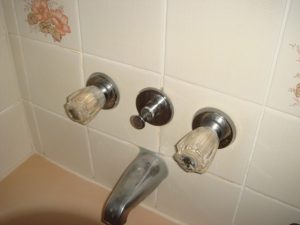In my first experience with online ordering, I purchased some car parts which were shipped UPS. On delivery there was a large bill for taxes and brokerage fees.
Another time, I used an online logistics company that received the order, processed the paperwork and forwarded the package to me. I actually wanted to do a return when I received the item and it was easier at that time just to resell it on ebay.
Canada Revenue Agency requires taxes be collected for declared values over $20 CAD and couriers are notorious for high charges for handling. Express services tend to waive brokerage fees and if shipped USPS, Canada Post’s charge is a flat $9.95. http://www.cbsa-asfc.gc.ca/import/postal-postale/duty-droits-eng.html
Make sure your seller accurately indicates the value of the item on the declaration form the amount that you paid. If they lazily declare some higher value, your taxes will be calculated on that higher amount. You can submit for a refund if this happens. The instructions are usually on the back of the declaration form.
Courier Brokerage Fees for Canada
Here are links to their fees – Note that this is for clearance only and does not include duties and taxes.
- UPS
- DHL – Link indicates a flat fee of $10.50 is charged PLUS a $4.25 transaction fee
- Fedex – free clearance for Priority
Clearing Customs Yourself
One way to get around brokerage fees is to clear customs yourself which involves a lot of running around. It may easier to request them to ship USPS and pay the $10. Here are the steps if you want to try it and live near the airport.
- Ask the shipper to mark “Customer will clear customs” on the outside of the package. Make sure they have your phone number and email. You may want to contact the courier directly once you get the waybill number and ask them to hold it for self-clearance.
- When the package arrives, you will need to grab the paperwork from their depot. The courier should provide an address. In metro Vancouver, the depots are all located by the airport.
- Take the paperwork to the CRA office usually nearby and pay the necessary taxes. Take the receipt back to the depot and they will release your package. In Richmond BC, the tax office is in the blue building on Miller Rd beside Tim Hortons.
- There is a chance the courier will ignore the instructions and do the brokerage themselves anyways.
Package Receiving
The easiest way to receive packages if you live near the border is to use package receiving services in border towns. You have to declare your purchases crossing back into Canada but typically, they won’t make you pay for small amounts. It also depends on how busy they are, though technically you are required to pay taxes on all imports. Exemptions only kick in after absences of more than 24 hours. These services are great for buying from sellers that will only ship to the US. Amazon US will also ship to third party addresses. You also have exemption if you are away for more than 24 hours. See here.
Receiving services I’ve used before include
Point Roberts
TSB Shipping – Directly beside the post office. You will need to register to receive USPS packages.
Blaine
Most services require a yearly fee. Here are some that don’t.
Blaine Enterprises – No registration required and no notifications. $3 for small packages. Not great hours – 9 to 5 weekdays and mornings on Saturdays. Friendly but a bit disorganized without the pre-registration. I’ve had to go in the back and search for my package a few times. Two week free hold and they take large packages for a slightly higher fee.
247parcel – Recently expanded out into a much larger building with more lockers. Open 24/7 as the name suggests with automated lockers. Free SMS and/or email notification. Free registration. $3 for small packages. One week free hold. Need to prepay online.
5dpackages – Newest and cheapest service. Only $2/small package. Open late til 9pm and weekends. Free email and/or SMS notification and registration. Free 30 day hold. Have used many times with no problems. Use the referral code here for free $5 credit (I get credit as well, win-win). https://5dpackages.com/?r=5536WN





